Capsule Review: SteelSeries Apex M500 Gaming Mechanical Keyboard
by E. Fylladitakis on June 10, 2016 10:00 AM EST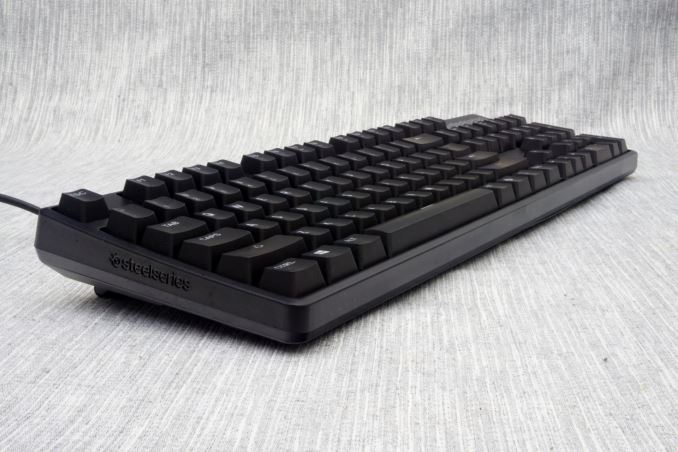
SteelSeries is one of the most reputable manufacturers of gaming-related peripherals and software. The company originates from Denmark and today has offices in the US and Taiwan. Even so, the company was a little late into the mechanical keyboards market, as they opted to focus on advanced membrane-based keyboards instead. Until recently, the company has been offering just one mechanical keyboard, the Apex M800 with their own custom QS1 switches.
The high price and, perhaps, the use of switches from an “unknown” source did do any favors for the popularity of the Apex M800, but it still had its own distinct user base. SteelSeries however is a company who is largely based and focused around the gaming community, so they rightfully felt that they ought to have at least one mechanical keyboard designed solely for hardcore and professional gamers. To that end, SteelSeries recently released the Apex M500, a high performance no-frills mechanical keyboard designed exclusively with that market group in mind.
Packaging and bundle
We received the Apex M500 in a very strong cardboard box that can withstand even the roughest of transportation services. The artwork is relatively simple, based on abstract geometrical shapes and a picture of the keyboard itself. Inside the box we only found the keyboard itself, protected inside a simply nylon bag. SteelSeries does not supply any additional parts, such as a wrist rest, extra keycaps or a keycap remover.
The SteelSeries Apex M500 Mechanical Gaming Keyboard
The designer of the SteelSeries Apex M500 truly tried to make it as simple and straightforward as possible. The body of the keyboard is plastic, with narrow rounded edges, and is sprayed with a matte black paint that is highly resistant to fingerprints. It is a standard 104-key ANSI layout keyboard with a 6.25× Spacebar and seven 1.25× bottom row keys. The keycaps are made from ABS plastic and have large, smooth characters. The company’s logo is printed at the top right corner of the keyboard, above the numpad.
Although there are no extra buttons on the Apex M500, a few additional functions are supported via the FN key that is replacing the right Windows key. While the FN key is being held pressed, the F5-F6 keys provide backlight brightness control and the F7-F12 keys offer basic media and volume controls. Other than that, the Apex M500 is just a standard 104-key keyboard. We would like to have seen at least a separate mechanism for sound volume control, but as a compromise of sorts the Apex M500 is a fully programmable model, so the user can reprogram any of the standard keys to perform such functions if that is a necessity.
For some strange reason, the designer tried to make the bottom of the Apex M500 aesthetically appealing. The plastic body forms an abstract, modern design, based on simple polyhedral shapes with rounded edges. A large, full company logo is engraved on the top left side of the keyboard’s underside. The rubber anti-skid pads are thick and very effective, providing very strong grip even on the most slippery solid surfaces. There are grooves for the routing of the cable to exit from either the center, left or right top side of the keyboard.
SteelSeries decided not to use proprietary switches on the Apex M500. The company went with the proven and very reputable Cherry MX switches instead. There currently is only one version of the Apex M500 available, with Cherry MX Red switches and blue LEDs. These switches are typically considered to be the best for gaming due to their linearity and low actuation force.
The blue backlighting of the Apex M500 is very strong and even. Blue lighting can be tiring for the human eye and the Apex M500 is blindingly bright at maximum intensity, so users will have to reduce it significantly for use inside dark rooms.
After we removed the plastic frame of the Apex M500, all that is left is the main PCB permanently attached on the blue steel frame that is supporting the keys. This is the standard and proven design of most mechanical keyboards, providing excellent mechanical cohesion and durability. The soldering job is excellent, with no flaws that we could find.
ST Microelectronics supplies the STM32F072R ARM microprocessor that is the heart of the Apex M500. It is a high performance 32-bit microcontroller with a maximum frequency of 48 MHz and 64KB of integrated Flash memory.


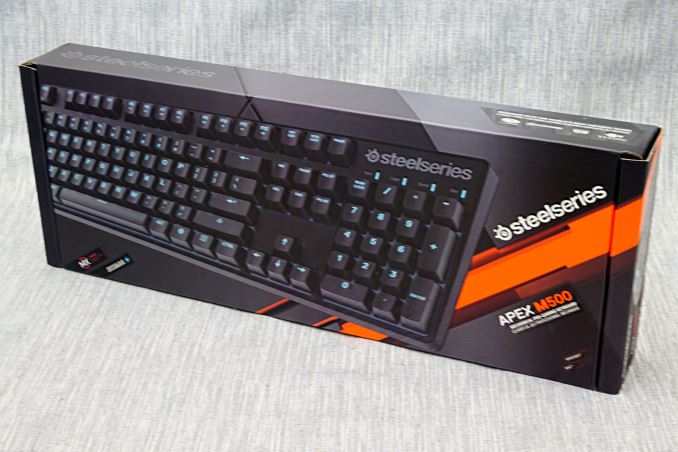
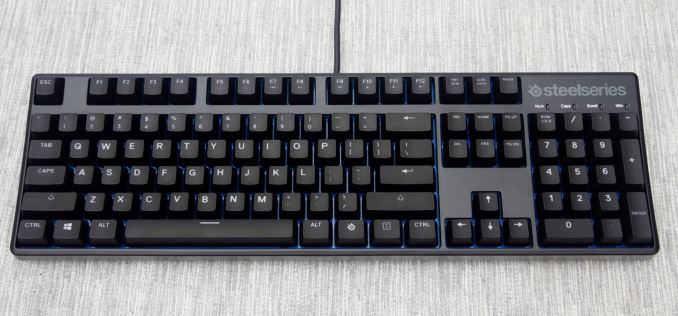
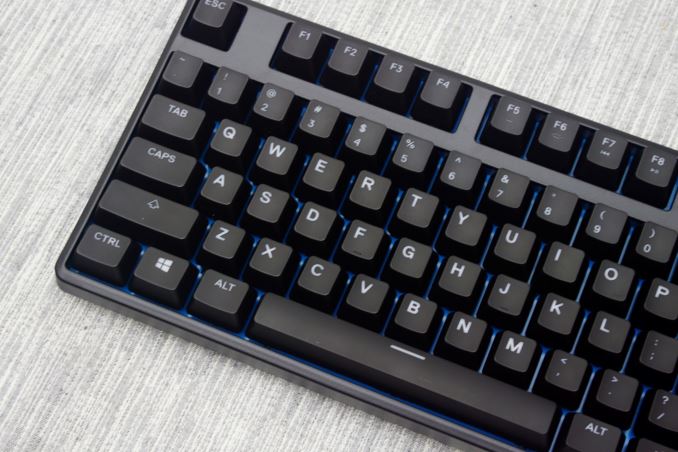
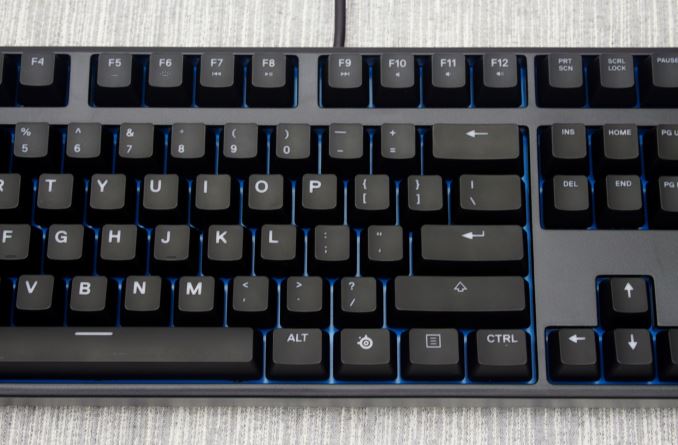
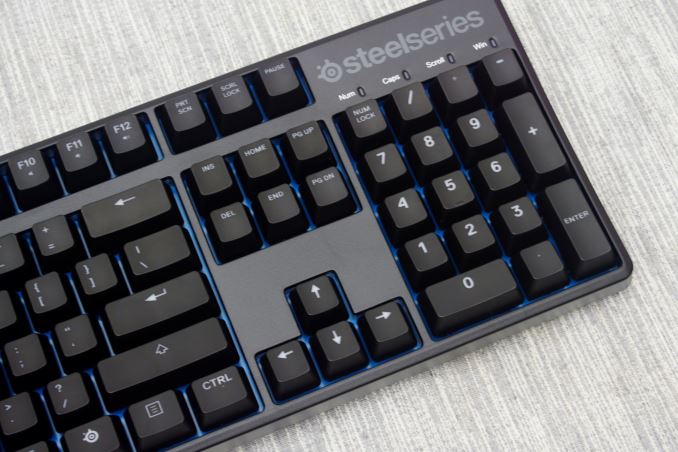
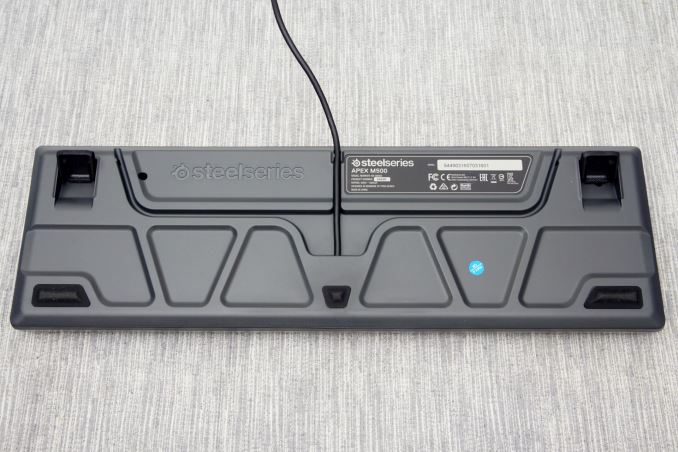


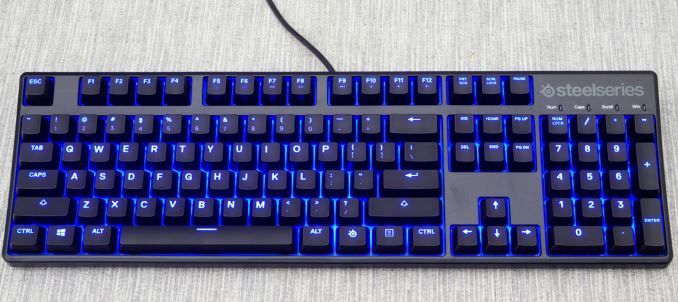
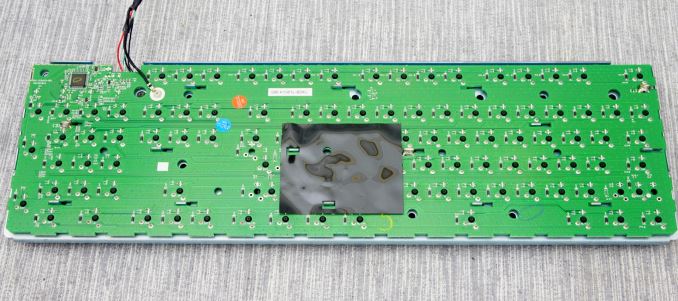
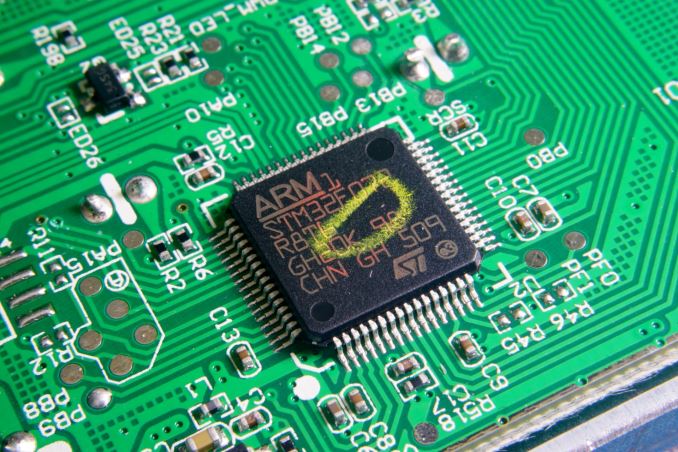








60 Comments
View All Comments
kaidenshi - Saturday, June 11, 2016 - link
My wife has gotten interested in playing Rust since she started watching me play, and she's never been a gamer so her instinct is to use the arrow keys for movement. That actually works for her, since she is hardcore left-handed and has the mouse on the left side. (I'm left-dominant but mostly ambidextrous so I use the mouse/kb like right-handed folks). Oddly enough, the hardest thing for her to overcome is using two fingers on the mouse; she normally uses her index finger on the left button and moves it to the right button when necessary. That just doesn't work for FPS style games.MadAd - Saturday, June 11, 2016 - link
Get her her own mouse she can swap the buttons on, leaving your one normal, its what I do when I'm teaching/sharing desktops with left handers.JoeyJoJo123 - Friday, June 10, 2016 - link
>Blue lighting can be tiring for the human eye and the Apex M500 is blindingly bright at maximum intensity, so users will have to reduce it significantly for use inside dark rooms.Blue light, f.lux, and such are grand ol' meemees.
>my eyes hurt from this blue light, maaaan.
>this blue light is messing up my sleep, maaan, but yellow light is a-okay for helping me sleep.
ddriver - Friday, June 10, 2016 - link
Not only is it the possibly worst color to the eye, it is also the lease efficient energy wise - blue leds suck compared to other colors. It is a complete mystery why the industry keep shoving it down people's throats.DanNeely - Friday, June 10, 2016 - link
Because it's the newest color. Red, green, and amber LEDs are old and boring.inighthawki - Friday, June 10, 2016 - link
Dare I say, a professional look of white? I recently bought a corsair mechanical keyboard and opted for the RBG version solely so I could change the keys to white from the non-RGB version which is locked at red.JoeyJoJo123 - Friday, June 10, 2016 - link
It's literally just a color dude. I don't buy all this garbage of "I have scientific proof that blue is bad for you". Yeah, go ahead and stand in line next to the loser telling me that gluten is bad, that carbs are bad, that cellphone radiation gives me cancer, etc.Literally everything is bad for you and will kill you down the road.
I don't care at this point.
inighthawki - Friday, June 10, 2016 - link
It's not that blue is bad for you, it's simply the hardest color for the human eye to see, and it's overall less energy inefficient to produce an output in blue that is as visible as other colors. There is a reason that night vision typically uses green, and it's not because blue or red are bad for your eyes, it's just because green is really easy for the eye to see and contrast against other shades.From a technical perspective he is completely correct - blue is not a wise color choice. From a manufacturing perspective, though? Not sure, maybe blue LEDs are the easiest/cheapest to produce. Power draw is likely also not their primary concern.
JoeyJoJo123 - Friday, June 10, 2016 - link
You do realize that all of that is thrown out the window, because the majority of buyers buy based on appearance, right?Blue LEDs are the most common on peripherals. Monitor on/off LED. Speaker on/off LED. Computer cases most often have on/off and HDD activity blue LED. It's pretty natural for people to buy the keyboard that matches what they already have going for them, and it's not as if they got RGB LEDs on their monitor and speakers, and such.
I doubt anyone has ever looked at buying a backlit mechanical keyboard, noticed the blue LED and thought to themselves, "No way! I'm not going to buy something that's 'hard' for my eyes to see, and the inefficiency of using blue LEDs was an awful idea! And using these at night will ruin my sleep/wake cycle!"
If you asked a manufacturer how many units sold of an several _identical_ keyboards, save for LED colors, you'd see that blue backlit keyboards sold hand over fist way more than any other individual color. It's in the manufacturer's best interest to not introduce too many models on the market and blue LED backlighting captures the majority of buyers anyways, so there's very legitimate logic going on here.
You're overthinking this WAY too hard, man. The absolutely majority of users are just out there to get a black keyboard, to match their black peripherals and computer, and to match with LED color, too.
You're in the minority if you're one of the few who cares about blue LED eyestrain, inefficiency, and sleep/wake cycle. And people of this opinion know very well that having an evenly lit desk, through an overhead lamp, is more ergonomic than backlit keyboards.
inighthawki - Friday, June 10, 2016 - link
I think you're taking my reply way too seriously. I have nothing against blue LEDs, I'm just pointing out ddriver's statement is factually accurate, and that it has nothing to do with blue being *bad* for you, simply that it is less efficient. If people like the color blue then... great! Let them buy it.As for me, I have no issues with eye strain, efficiency, blah blah blah. I do, however, choose the most practical product for my needs, which is the one that offers better contrast. It doesn't hurt my eyes to see blue, but it's also a lot easier to see green or white.
I also didn't say anything about impact on sleep/wake cycles, nor do I care.